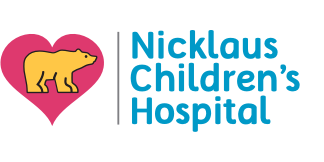- Parents Home
- Para Padres
- Allergy Center
- Asthma Center
- Cancer Center
- Diabetes Center
- Diseases & Conditions
- Doctors & Hospitals
- Emotions & Behavior
- First Aid & Safety
- Flu Center
- Food Allergy Center
- General Health
- Growth & Development
- Heart Health
- Homework Help Center
- Infections
- Newborn Center
- Nutrition & Fitness Center
- Play & Learn Center
- Pregnancy Center
- Q&A
- Recipes
- School & Family Life
- Sports Medicine Center
- Videos
- Kids Home
- Para Niños
- Asthma Center
- Cancer Center
- Diabetes Center
- Feelings
- Getting Help
- Health Problems
- Health Problems of Grown-Ups
- Heart Center
- Homework Center
- How the Body Works
- Illnesses & Injuries
- Kids' Medical Dictionary
- Movies & More
- Nutrition & Fitness Center
- Puberty & Growing Up
- Q&A
- Recipes & Cooking
- Relax & Unwind Center
- Stay Safe Center
- Staying Healthy
- Staying Safe
- Videos
- Teens Home
- Para Adolescentes
- Asthma Center
- Be Your Best Self Center
- Cancer Center
- Diabetes Center
- Diseases & Conditions
- Drugs & Alcohol
- Expert Answers (Q&A)
- Flu Center
- Homework Help Center
- Infections
- Managing Your Medical Care
- Managing Your Weight
- Nutrition & Fitness Center
- Recipes
- Safety & First Aid
- School & Work
- Sports Center
- Stress & Coping Center
- Videos
- Your Body
- Your Mind
A to Z: Tethered Cord
Normally, the spinal cord moves freely inside the spinal canal. A tethered cord is when part of the spinal cord is attached inside the spinal canal, and the spinal cord cannot move freely.
More to Know
The spinal cord is a bundle of nerves that sends signals between the brain and other parts of the body. It runs down the center of the backbone (spine) through a fluid-filled channel called the spinal canal.
The spinal cord carries messages back and forth between the brain and body. A tethered spinal cord can cause problems with getting these messages through.
Kids with tethered cords don't always have symptoms. But as a child grows, the nerves in the spinal cord can become stretched. When this happens, signals may not travel as easily back and forth between the brain and certain parts of the body. A child may have back pain; leg pain; numbness or tingling in the legs; leg weakness; trouble walking; a frequent or sudden need to pee; constipation; difficulty peeing, or pee or poop accidents. Some kids have a birthmark, dimple, patch of hair, or bump on their lower back.
A child may be born with a tethered cord, or it may develop after an injury or surgery.
Keep in Mind
Surgery to release the spinal cord is the main treatment for a tethered cord. The doctor will make a small opening near the backbone, remove any connections, and then close the opening with medical glue or stitches. These will dissolve on their own and do not need to be removed.
All A to Z dictionary entries are regularly reviewed by KidsHealth medical experts.

© 1995- The Nemours Foundation. KidsHealth® is a registered trademark of The Nemours Foundation. All rights reserved.
Images sourced by The Nemours Foundation and Getty Images.

